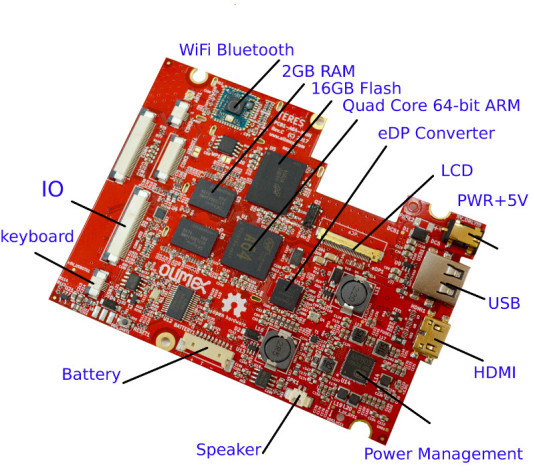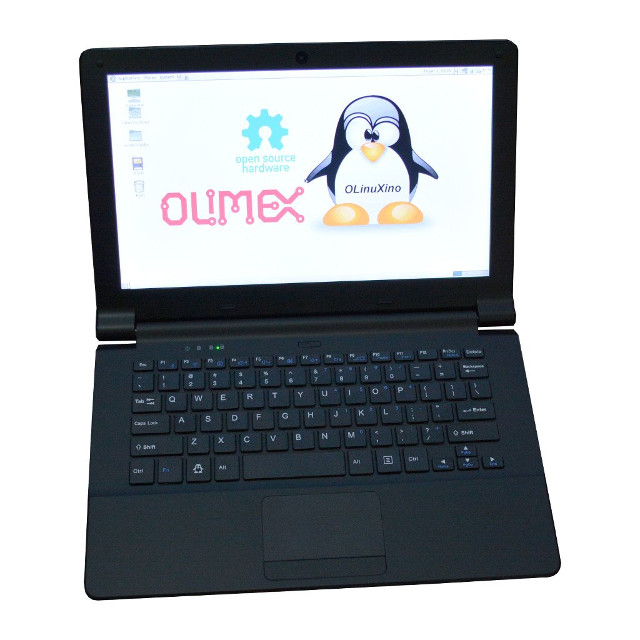Olimex has been working on their open source hardware TERES-I DIY laptop since last year. The laptop is supposed to come in kit form, so that you can build it yourself. Every board and most parts are open source to let your easily repair it, or improve it by adapting the part to your own needs.
The company has now launched the laptop kit for 240 Euros in black or white.
Olimex TERES-I laptop updated specifications:
- SoC – Allwinner A64 quad core ARM Cortex-A53 processor @ 1.2 GHz with Mali-400MP2 GPU
- System Memory – 2GB DDR3L
- Storage – 16 GB eMMC Flash, micro SD slot
- Display – 11.6″ LCD display with 1366×768 resolution
- Video Output – 1x HDMI 1.4 port
- Audio – Via mini HDMI, 3.5mm audio jack, 2x speakers, microphone
- Connectivity – 802.11 b/g/n WiFi up to 150Mbps, Bluetooth 4.0 LE
- USB – 2x USB port ports
- Front camera
- QWERTY keyboard + touchpad with 2 buttons
- Debugging – Serial debug via header or 3.5mm audio jack
- Power Supply – 5V/3A
- Battery – 9,500mAh capacity
- Weight – ~1 kg
The laptop will ship with Ubuntu 16.04 LTS with Mate, Firefox browser, Video player, Open Office, Arduino IDE and IceStorm for FPGA development (an FPGA add-on board is planned).

The build instructions can be downloaded here. Hardware design files for all 5 boards for the laptop, and software will soon be all found on Github. Note that the laptop is intended for engineering development and evaluation only, should not be considered a finished product, and may not comply with FCC, CE or UL directives. Olimex had quite a lot of people registered their interests before, so they only expect to be able to fulfill new order within 2 or 3 weeks.

Jean-Luc started CNX Software in 2010 as a part-time endeavor, before quitting his job as a software engineering manager, and starting to write daily news, and reviews full time later in 2011.
Support CNX Software! Donate via cryptocurrencies, become a Patron on Patreon, or purchase goods on Amazon or Aliexpress





